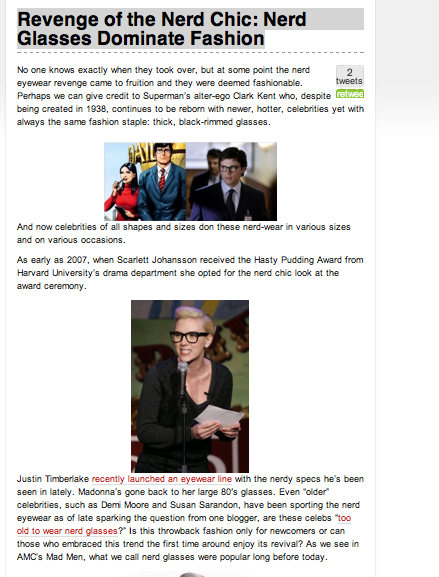In Part 1 of this blog series, we discussed why relevant content is key to internet marketing this year, and how good writing is essential to developing content that search engines (and readers) won’t identify as “spam.”
Once you get the right writers on board, you want to make sure that you’re producing content that appeals to the right audience and can be discovered on the web. Appropriate targeting and search engine optimization are critical to bringing convertible traffic to your website. It’s also important to use a good linking structure to seamlessly direct readers to conversion pages.
Targeting and SEO strategies should be developed before your writers’ fingers ever hit the keyboards – and all of the content you produce should organically cater to your preferred audience and hit the right keywords.
Remember “T” is for targeting and, subsequently, traffic.
When setting targeting goals, start with the simplest step: Write a description of your target audience – from age, income and geographic location to expected knowledge of your industry. Then, ask yourself what information related to your products, services and overall sector will be of interest to these consumers. What kind of information related to your business are they already searching for?
If you produce optimized content that meets prospective customers’ information needs, you’re more likely to catch clicks from a consumer base that will convert.
Ensuring that your content is a reflection of your brand is also important in targeting. Last year, Brafton covered a survey that found brands which invested in establishing thought leadership with researched content generated up to triple the inbound leads of businesses that were less invested in content development. Content should be developed with voice and authority that emphasize the unique qualities of your business, as this is an additional way to draw a relevant audience.
One eyeglass company on the web posted a nice article about a “nerd glasses” trend. The company’s website makes clear that it positions itself as a “chic” eyewear provider. It’s all about getting stylish, trendy glasses for less. With this in mind, one of its blog articles, “Revenge of the Nerd Chic: Nerd Glasses Dominate Fashion,” does a great job of appealing to the right crowd. (It also does a nice job of promoting the company’s “nerd glasses” in a way that doesn’t feel forced – props to the writers.) 
The article is well-written, and it’s enhanced by timely references to celebs donning glasses. The retweets and comments on the page reveal that the post does a good job of engaging the brand’s audience. One thing we notice is that it brings readers back to the company’s main ecommerce page instead of a page specifically about “nerd glasses.” Which brings us to the next point…
Be smart about SEO and the purchase funnel.
When Brafton attended ad:tech New York last fall, we reported that Conde Nast’s executive director of creative services said business partners generated the most revenue when they served optimized ad content that carried users through a linking structure which told a story. The same should be true for the content you put on your site.
To start, you want it to be appropriately optimized with relevant keywords so it can be discovered via search. Search engine optimization and successful content marketing go hand-in-hand. When planning SEO strategies, consider the latest search trends – such as the general rise in local searches or more specific hot topics in your industry.
The keywords you use have to be meaningful in the context of your content, and they should also be chosen according to which key phrases can boost your site’s page rank. For instance, your Miami firm might not rank well if you write blog posts with “home insurance” in the headlines, but perhaps “Florida home insurance” will drive better results – and this kind of keyword planning also builds on the idea of appropriate targeting: A Miami resident is probably more interested in Florida’s insurance news than what’s happening in Denver.
When in doubt, turn to consultants to get insight on a results-driven keyword strategy. You can also ask experts for advice on a linking strategy that will take readers on an intuitive path to an ecommerce page. An article about the rising trend of platform pumps might perform better with a link that takes readers to a retailers’ landing page for platform shoes than one that takes them back to the company’s broad shoe selection.
 Content that tells a story about services, enhanced with links that continue the narrative down to the point of purchase, can lead to a happy ending for both web visitors and your brand.
Content that tells a story about services, enhanced with links that continue the narrative down to the point of purchase, can lead to a happy ending for both web visitors and your brand.

